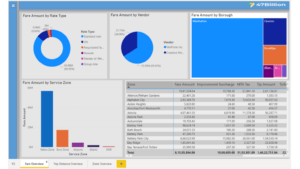Under Section 340B of the Public Health Service Act, pharmaceutical companies that participate in Medicaid have to offer discounts on outpatient drugs to covered entities(healthcare organizations) that serve several uninsured and low-income patients.
Since the 1990s, the 340B Program has been a support system for hospitals and covered entities in communities where people struggle with high prescription costs. It’s like a helping hand amidst financial challenges. This program is widespread across the healthcare landscape; about 40% of all hospitals in the US are part of it, according to the Government Accountability Office (GAO). The program covers various types of healthcare providers, from community health centers to children’s hospitals, ensuring diverse needs are met.
For these healthcare groups to keep enjoying the benefits of discounted drug prices, they have to stick to specific rules set by the Health Resources and Services Administration (HRSA). It’s like being part of a club with membership responsibilities:
They have to keep their records up-to-date with the Office of Pharmacy Affairs (OPA), which means letting them know about any new clinics or pharmacies they’re working with.
Every year, they need to confirm that they’re still eligible for the program.
They have to make sure the discounted drugs don’t end up with people who shouldn’t be getting them.
They need to be transparent about how they bill Medicaid for drugs to avoid double discounts.
Now, let’s discuss something important: the 340B audits. These audits are like health check-ups for these covered entities, ensuring they’re playing by the rules. If you’ve never been through one, let us know then. Having a pharmacy audit checklist can make things smoother, helping these organizations stay organized and compliant.
But before that, let’s understand the importance of Audits –
At the core of the 340B Program lies a commitment to honesty and abiding by the rules. HRSA insists that all participating entities keep records, ensuring they’re following every aspect of the program. While we’d like to believe everyone’s doing the right thing, audits are like a reality check to make sure everything’s on track. That’s why both internal and external audits are vital players in keeping the program honest.
External audits, whether conducted by HRSA or sometimes by the manufacturers themselves, are like spot checks to ensure everything’s running smoothly. If someone’s found not playing by the rules, they might have to pay back discounts they weren’t entitled to or even face being removed from the program.
Internal audits are just as crucial for pharmacies, hospitals, and healthcare organizations. They’re like giving yourself an overview someone else does. By doing these check-ups internally, you can catch any issues early on and fix them before HRSA or the manufacturers get involved. It’s all about staying proactive and making sure everything is in shape.
Now let’s get through the guide – Your Pharmacy Audit Checklist
Having a pharmacy audit checklist is crucial to ensure that your audits run smoothly and efficiently, whether they’re conducted internally or externally. Here are some critical steps for pre-audit preparations:
Identify Key Personnel: In preparation for an external audit, it’s vital to identify key personnel who will interact with auditors. They will discuss expectations for the onsite audit. Similarly, for internal audits, these personnel will set and communicate audit procedures within the organization. One crucial task will be setting a timeframe for the audit process.
Gather Data on 340B Program Administration: For both external and internal audits, gathering data on your administration of the 340B Program is essential. Auditors will request various documents, including policies, procedures, and internal controls. Review all relevant 340B policies and procedures, vendor software policies, contracts with state or local governments, contracts with pharmacies or other 340B service providers, and the most recent Medicare Cost Report Worksheets.
Select Drug Transaction Samples: Assessing sample transactions is a crucial method for evaluating compliance with the 340B Pricing Program. During external audits, auditors will test 340B drug transaction records on a sample basis. Similarly, for internal audits, it’s essential to select sample transactions. Ensure that each 340B service area is represented in the sample, covering a continuous six-month timeframe within the prior year. Select two samples, each containing around 25 transactions—one focusing on high-cost drugs and the other on Medicaid transactions.
By following these pre-audit preparations and incorporating them into your pharmacy audit checklist, you can ensure that your audits are well-organized, thorough, and compliant with 340B Program requirements.
Verify Your Eligibility: Just like updating your subscription or membership, keeping your eligibility for the 340B Pricing Program current is crucial. Internal audits and external auditors will both be looking into this. It means making sure all your info, like Medicaid billing details and contact points, is accurate and up-to-date. And don’t forget about those internal controls that help prevent mix-ups and double discounts—they need a check, too!
Assess Your Data: It’s like magnifying glassing your operations. Check that your compliance with the 340B Program is up to scratch across all your facilities and contract pharmacies. Review your policies and procedures closely to see if they’re working as they should.
Talk to Your Team: It’s time for a chat with the crew! Depending on how your organization is set up, different folks might have different insights. Financial managers, pharmacy directors, and others should be ready to talk about how they’re keeping things in line with 340B rules. It’s like getting everyone on the same page and making sure they know the game plan.
Test Your Transactions: Whether you’re doing the testing or auditors are doing it, the goal is the same: making sure everything’s on the up and up. Check that the right people provide healthcare services and that drugs should be kept from ending up where they should be. It’s like making sure all the pieces of the puzzle fit together.
Post-Audit:
Make Corrections: It’s time to tidy up! After your internal audit, fix any areas that didn’t meet the mark. This is your chance to iron out the wrinkles before an external audit comes knocking. And if any issues are found during external audits, don’t worry—just put together a plan to fix them.
Keep on Track: Like any good routine, keeping up with your pharmacy audit checklist is vital. Make sure you’re scheduling regular check-ins to keep everything in shape. It’s all about showing you’re on the ball and committed to keeping things running smoothly.
Doing self-assessments for your 340B Program can be a lot simpler than dealing with a complete audit process. We understand how overwhelming the whole audit process can be, especially when it comes to interviews. It’s a lot of scheduling, conducting interviews, jotting down answers, and then analyzing everything to find where things might not be up to date. Running a health center is already a big job—you shouldn’t have to add even more to your plate by dealing with all this extra paperwork and coordination. How do I get through this?
This guide is your go-to for all the processes. For more details let’s connect.



